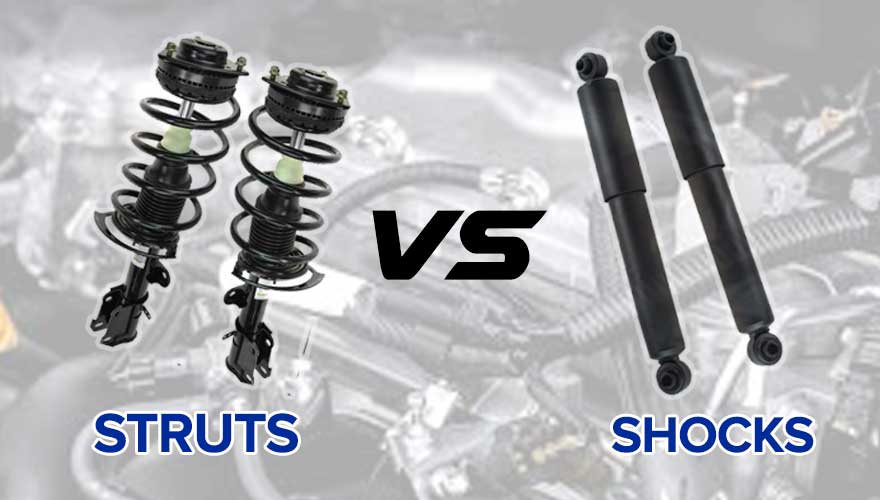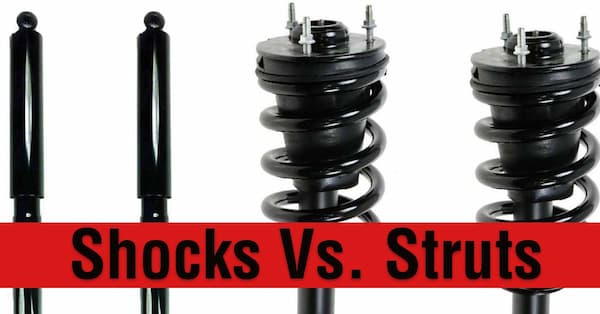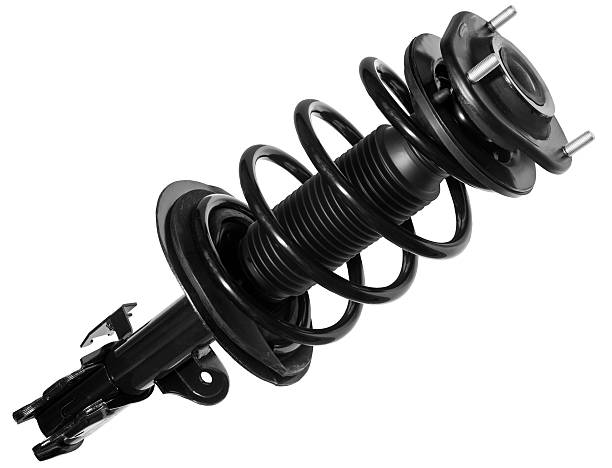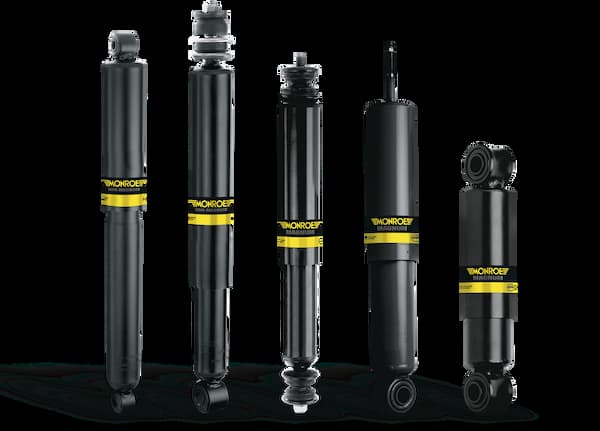
Shocks VS. Struts: What’s the Difference
This is a common question because the terms shock and brace are often used interchangeably. Shocks and struts perform the same basic role on a vehicle, dampening the movement of the springs, and preventing vibration and bounce. Although they have the same function, the shock absorber and strut are completely different parts. The key difference between shock absorbers and struts is that struts are a structural part of a vehicle’s suspension system whereas shock absorbers are not. Although the terms “shock” and “strut” are often used interchangeably, they are separate components with different functions. Learn the difference between shock absorbers and struts and when they may need service. Although the terms “shock” and “strut” are often used interchangeably, they are separate components with different functions. Learn the difference between shock absorbers and struts and when they may need service.
Are Shocks And Struts The Same Thing?

No! Both shock absorbers and struts are part of a vehicle’s suspension system. However, each has a very specific job.
A shock absorber is a hydraulic component that helps minimize movement created by the vehicle’s springs. These springs absorb some of the shocks you might feel from uneven or damaged roads. By softening the shock of rough roads and rocky terrain, the shocks help you better control your vehicle for a smoother, more comfortable ride.
Struts are structural components of some vehicle steering and suspension systems. They usually consist of springs and shock absorbers. Since struts are load-bearing components, they are designed to be much stronger than shock absorbers. In addition, they help to slow down vehicle bumps and improve the steering and positioning of the vehicle.
What is a Strut?

The strut is a key component of the vehicle steering system and has a great influence on the positioning angle. Camber and caster are usually adjusted on the struts themselves. The struts are also pivot points for the vehicle’s steering system and contain coil springs. Therefore, alignment is always required when replacing struts. This is why struts are usually more expensive than shocks. The struts will have bases and sometimes boots and bumpers throughout the strut. When replacing struts, boots and blocks should always be replaced. Coil springs typically last 300,000 miles and rarely need replacement. In some vehicles, you may find a complete strut unit including new springs.
What Strut Do
Struts are a common type of shock absorber used on many of today’s independent suspension, front-wheel drive vehicles, and some rear-wheel-drive vehicles.
The strut is the main structural component of the suspension. It replaces the upper control arm and upper ball joint used in conventional suspension. Due to their design, struts are lighter and take up less space than shock absorbers in conventional suspension systems.
Struts perform two main tasks. First, the struts are shock absorbing, just like a shock absorber. Internally, the struts act like shock absorbers. A piston is attached to the end of the piston rod and opposes hydraulic oil to control spring and suspension movement. Just like a shock absorber, the valve block creates resistance to the forces created by the suspension moving up and down. As the shock, the strut is speed-sensitive, which means it is valved so the amount of drag can increase or decrease depending on how fast the suspension is moving.
Struts also perform a second job. Unlike shock absorbers, struts provide structural support to the vehicle suspension, support springs, and hold tires in alignment. In addition, they also carry most of the side loads applied to the vehicle suspension. As a result, struts can affect ride comfort and handling, as well as wear on vehicle control, braking, steering, wheel alignment, and other suspension parts.
Strut Components
Typically, struts include a strut housing that provides rigid structural support for the assembly and a damping unit that controls spring and suspension movement within the strut housing. On most struts, the underbody connects to the steering knuckle, which in turn connects to the lower control arm via the lower ball joint.
A complete strut assembly includes all the parts required to replace a strut in a fully assembled unit. It combines strut housings, shock absorbers, and coil springs to support the weight of the vehicle.
What is a Shock?

Shock absorbers are the components used to keep tires on the road. The higher quality shock absorbers you buy, the smoother your car will ride. A good shock will reduce wear and tear on all parts of the vehicle. Shocks usually have eyelets, eyelets, and stems at each end, sometimes even stem-to-stem or with posts.
What Shocks Do
Despite what many believe, traditional shock absorbers do not support vehicle weight. Instead, the primary purpose of a shock absorber is to control spring and suspension movement. This is accomplished by converting the kinetic energy of the levitating motion into thermal or thermal energy, which is dissipated through the hydraulic fluid.
The amount of drag produced by the shock absorber depends on the speed of the suspension and the number and size of the holes or orifices in the piston. All modern shocks are speed-sensitive hydraulic damping devices, which means that the faster the suspension moves, the more resistance the shock provides. Thanks to this feature, the shock absorbers can be adjusted to different road conditions and reduce the following speeds:
- rebound
- Roll and sway from abrasion shocks, loss of ability to control the rate of weight transfer
- Brake dive and acceleration squat
The shock absorbers work on the principle of fluid displacement during both compression and extension cycles. A typical car or light truck has more drag during its extension cycle than during its compression cycle. The compression cycle controls the movement of the unsprung weight of the vehicle, while the expansion controls the heavier sprung weight.
Shock Components
A shock absorber is basically an oil pump. The piston is attached to the end of the piston rod and opposes the hydraulic fluid in the pressure tube. As the suspension moves up and down, hydraulic oil is forced through orifices in the pistons. However, these orifices allow only a small amount of fluid to pass through the piston. This slows down the piston, which in turn slows down the movement of the spring and suspension.
Can You Have a Shock and A Strut on the Same Vehicle?
Yes. To add to the confusion about dampers and shock absorbers, you can have both shock absorbers and shock absorbers in the same car. You’ll find struts on the front axle and shock absorbers on the rear axle on many cars and trucks.
Does Your Vehicle Need New Shocks Or Struts?
Shock absorbers and struts can wear out, especially when you’re driving off-road or on rough roads. It is recommended that the shock absorbers and struts be inspected after 50,000 miles or according to the vehicle manufacturer’s maintenance schedule. However, if you’re not sure when you last checked them, here are a few signs to see if it’s time to check them:
When cornering or changing lanes, your vehicle wobbles significantly, making it difficult to steer.
When braking, the front end of the car will drop, and when accelerating, the rear end of the car will drop.
- Your tires are worn or have unusually flat areas (cupping)
- Vehicle rebounds excessively
- Poor steering response or noise when cornering
- Lack of control at high speed
While there are some signs of shock and support issues, some may be difficult to pin down. For example, some signs of uneven tread wear might lead you to think there’s a problem with your shocks or struts, but those same symptoms could also point to wheel alignment issues, inflation issues, or a variety of other conditions. That’s why it’s important to get professional advice before “self-diagnosing” your car.
Replacing old or worn shock absorbers and struts is not only good for your vehicle, it also protects your investment in tires by reducing unnecessary wear so you can get more life out of them.
Final Words
Every wheel on a vehicle has a shock absorber or strut. However, your vehicle may have shocks in the front and struts or other configurations in the rear. The point is that each wheel has some ride control section.


Average Rating